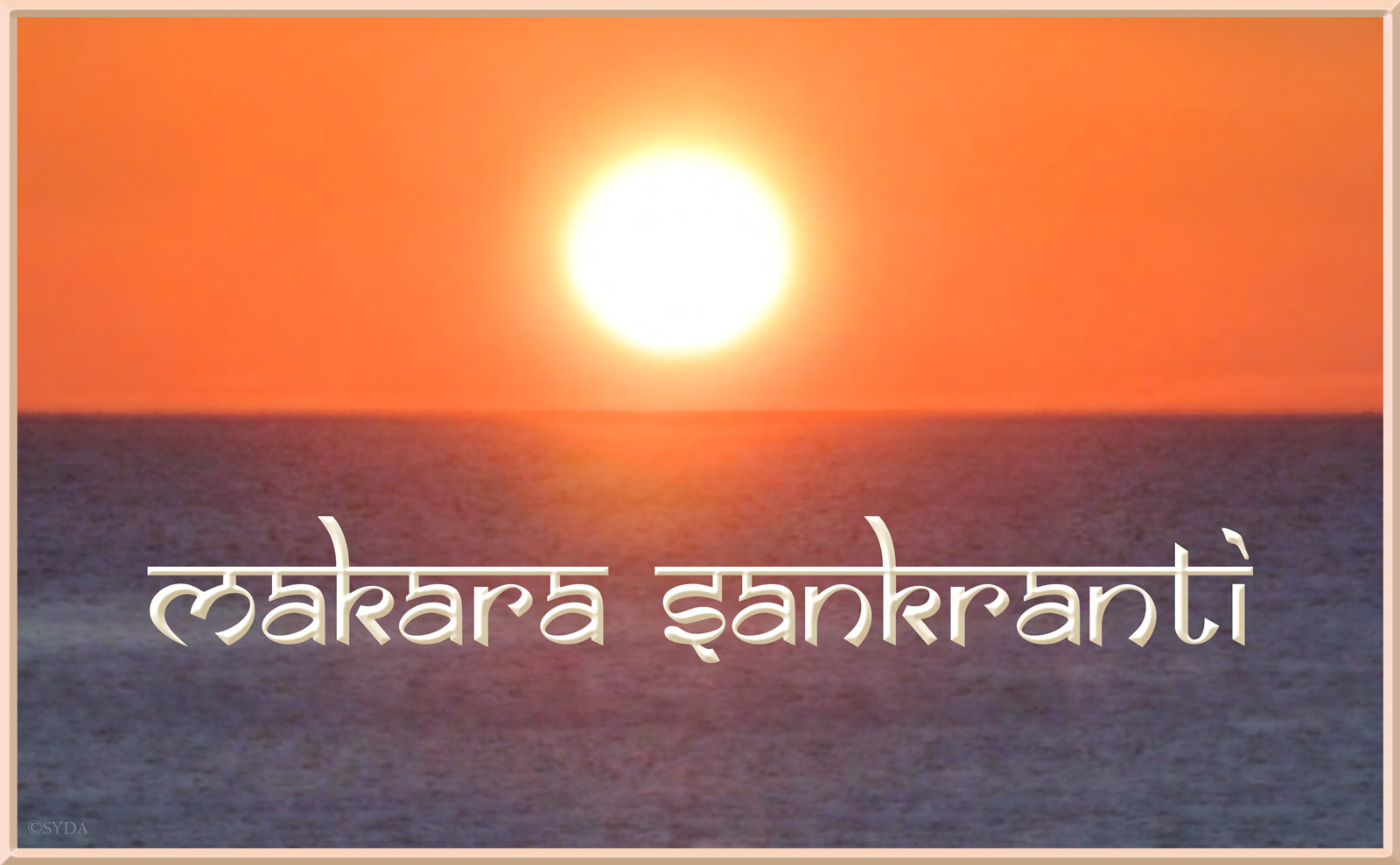Makara Sankranti
Wednesday, January 14, 2026

by Swami Indirananda
Makara Sankranti is a holiday in India dedicated to the worship of Surya Devata, the sun god, whose light nourishes and sustains all life on this planet. This day heralds the beginning of the season of increased light in the Northern Hemisphere as the sun begins its six-month journey toward the north. For a seeker who has received inner awakening from the Guru’s grace, this journey of the sun, called uttarayana, symbolizes the internal ascent of Kundalini Shakti. On the inner uttarayana, Kundalini moves through the seeker’s chakras, spiritual centers, in an epic journey toward the resplendent thousand-petaled sahasrara.
Makara Sankranti is one of the few Indian holidays that is based on the solar cycle. According to the Indian calendar known as panchanga, this holiday is typically observed on January 14.
The Sanskrit word sankranti means “passage,” and in Vedic astrology, makara is the name of the tenth sign of the zodiac. The makara is a mythological animal, half-terrestrial and half-aquatic, and it is often depicted as a crocodile. It is considered to be a guardian of gateways and thresholds.
During Makara Sankranti, people throughout India honor the noble warrior Bhishma Pitahmaha (Grandfather Bhishma) who was the embodiment of dharma, righteousness. The Indian epic Mahabharata recounts how Bhishma was mortally wounded in a ferocious battle, pierced through by thousands of arrows. Because he had led a life of dharma, he received from Lord Krishna the boon of choosing the time of his own death. Bhishma chose to depart on Makara Sankranti so that his final journey would follow the path of light. As he lay on his bed of arrows, waiting for the auspicious hour when the sun would turn northward, he imparted to his great-nephew Yudhishthira the revered text Shri Vishnu Sahasranama.
Makara Sankranti is also celebrated in India as a time of renewal. At this point the days begin growing longer and warmer. Farmers rejoice as they reap a bumper crop from lush green rice fields and a countryside covered in yellow-flowered mustard plants and green and golden stalks of sugarcane. The impression one has when looking out over these laden fields is of an infinite golden earth. Throughout India, people celebrate the festival, which takes on a different name depending on the region. It is Makara Sankranti in Maharashtra, Karnataka, Andhra Pradesh, and Telangana; Pongal in Tamil Nadu; Lohri and Maghi in Punjab and Haryana; Utarana in Gujarat; and Magh Bihu in Assam, to name just a few examples.
In Maharashtra, the state in which Gurudev Siddha Peeth, the Siddha Yoga Ashram in India, is situated, it is customary for people to offer laddus, sweets made of sesame seeds and jaggery, to one another on Makara Sankranti. As they give each other these sweets, they say to each other in the Marathi language, तिळगुळ घ्या गोड गोड बोला (tiḷguḷ ghyā goḍ goḍ bolā)—“Please receive this laddu and speak sweetly.” The sentiment behind this phrase is beautiful—it is an encouragement to remember once more the sweetness that exists in the world and to let go of that which is bitter.
Throughout India, thousands take part in the Makara Sankranti festivities by flying kites. These celebrants, both young and old, often compete in flying their kites. Laughter and exuberance abound—it is fun for those joining in the sport and also for those watching and cheering them on. All the kite fliers pray that a strong wind will come, pick up their kites, and send them soaring into the sky. Each hopes that their kite will get the closest to Surya Devata.
As the day goes on, the blue sky is papered with innumerable kites in every color, shape, design, and size imaginable. The sun shines gloriously through this mosaic, a refraction of color that warms the earth and all those who stand upon it. It is a marvelous sight.
Other apt ways to celebrate Makara Sankranti are by chanting the Siddha Yoga namasankirtana Narayana and by reciting the Surya Gayatri mantra. This mantra, which honors Surya Devata, is also known as the Adi Gayatri, the original and principal mantra among the many gayatri mantras. It is considered particularly auspicious to recite this gayatri mantra 3, 11, 21, or 108 times (or in numbers that are derived by multiplying or dividing these numbers). You may recite the Surya Gayatri mantra, which is in the joyful and energetic Vibhas raga, with the recording on the Siddha Yoga path website.



